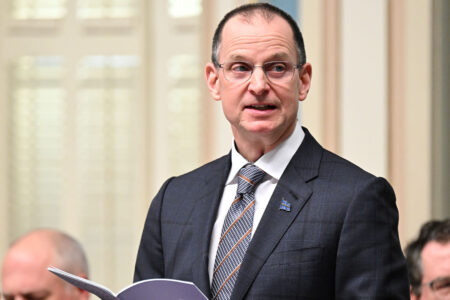
(This article has been translated into French.)
Much has been written about Ontario’s and Alberta’s decisions in the past year to reverse course and eliminate their carbon pricing systems. Until recently, few jurisdictions with fully implemented carbon price regimes turned back the clock, with Australia being perhaps the most high-profile case. In each of these instances, conventional wisdom suggests that newly elected right-leaning governments were responsible for the demise of carbon pricing.
However, despite very similar political circumstances that saw a new right-of-centre government form in 2018 under François Legault’s Coalition Avenir Québec, Quebec has remained steadfast in its implementation of a carbon price. In fact, a carbon price has been in place in la Belle Province since 2007, starting with a modest levy on fossil fuels that was expanded to a broad cap-and-trade system, the Système de plafonnement et d’échange des droits d’émission (SPEDE). First implemented in 2013 to cover industrial emissions, it was radically expanded in 2015 to include the transportation sector. Inspired by the California-led Western Climate Initiative, Quebec linked its carbon market to California’s carbon market in January 2014 and later, briefly, to the now abolished Ontario cap-and-trade system.
The SPEDE was established before the start of the current effort to implement a national backstop. It is one of the two systems designated to guide other provinces in designing carbon pollution pricing. The 2016 federal benchmark specifies that jurisdictions can implement “(i) an explicit price-based system (a carbon tax like British Columbia’s or a hybrid system comprised of a carbon levy on fuels and performance-based emissions trading system like in Alberta) or (ii) a cap-and-trade system (e.g. Ontario and Quebec).”
How can the resilience of carbon pricing policy in Quebec be explained? A combination of key factors set Quebec apart from most other provinces and collectively account for the province’s sustained commitment to carbon pricing: the presence of an interparty consensus, the relative absence of voter polarization on this topic and the well-established perception that Quebec will benefit economically from the transition to a low-carbon economy.
Interparty consensus
Carbon pricing was introduced by the Parti Libéral du Quebec in 2007, in the form of a modest annual duty payable to the Fonds vert, or Green Fund, which finances a variety of government programs and civil society projects to address climate change. The pricing approach became increasingly ambitious with the transition to a cap-and-trade system, which started in 2013 and continues to this day. Remarkably, this policy has survived several changes of regime during that period, with governments formed by four ideologically diverse premiers under the Liberals, the Parti Québécois and the Coalition Avenir Québec. Despite their fundamental disagreement on many issues, these parties all agree with carbon pricing, as evidenced by the unanimous vote by the National Assembly in support of linking the Quebec and California carbon markets. Moreover, while carbon pricing has been a significant electoral issue in Ontario, British Columbia and Alberta, it has hardly been mentioned during election campaigns in Quebec.
To be sure, the Quebec approach has faced a few challenges over the years. For instance, the province’s fuel distributors expressed reservations about the initial duty payable to the Green Fund and, later on, their inclusion under the cap-and-trade system in 2015. Their views were aligned with those of the Commission sur les enjeux énergétiques du Québec, which in 2014 recommended that the Liberal government suspend implementation of the carbon market, mainly because of the absence of an equivalent cap-and-trade system in Ontario at the time. Yet the Liberals stayed the course on carbon pricing even as it became clear that the Ontario carbon market, implemented in 2017, would be abolished by the Ford government following the 2018 Ontario general election.
In Quebec, the agreement among political parties to implement carbon pricing has, so far, survived the multiple cycles of attention surrounding the management of the Green Fund, which collects the revenues from the cap-and-trade system. While other jurisdictions, like British Columbia, have implemented revenue-neutral carbon pricing, revenues from the Quebec carbon market (like the carbon levy it replaced) are recycled to finance projects aimed at reducing GHG emissions. Some of these projects were scrutinized and criticized by the media and members of the opposition, and even by Premier Legault himself, who agreed that changes to the Green Fund’s management are needed. While calls for reform of the fund have regularly resurfaced, the concern has not spilled over to undermine the legitimacy of the SPEDE.
Political polarization and carbon pricing
Many parts of the world are seeing increased polarization on the issue of climate change, to the point where the eminent environmental policy and public opinion scholar Riley Dunlap has argued that climate change has become one of the defining issues for what it means to be Republican or Democratic in a US context. In Canada, public opinion surveys have consistently found more evidence of consensus around anthropogenic climate change — and support of carbon pricing — in Quebec than in the Western provinces, with the exception of British Columbia. Moreover, research has found consistency between opinion and policy, with relatively more support for cap-and-trade (as opposed to carbon taxes) in Quebec, while carbon taxes seem to be preferred to cap-and-trade in British Columbia, at least in recent studies.
It is worth noting that majority support for carbon pricing has been found in provinces outside Quebec. While British Columbia received much praise for introducing a revenue-neutral carbon tax early on, few remember that Alberta was the first province to adopt climate legislation, in 2003, and the first to bring in a carbon pricing system, under the 2007 Specified Gas Emitters Regulation. Much like other instances of market-based environmental policies, these early measures were adopted without much controversy. In fact, other environmental market-based instruments have been implemented in recent years without becoming salient electoral issues. For instance, while Ontario and Alberta repealed their carbon pricing instruments, they both still have cap-and-trade systems for nitrogen oxide and sulphur dioxide emissions from industrial sources (see Alberta’s Emissions Trading Regulation and Ontario’s Emissions Trading Registry).
Economic opportunities in a low-carbon economy
A final factor contributing to the resilience of carbon pricing is a narrative often repeated, albeit in different ways: that Quebec will benefit economically from the shift to a low-carbon economy. The manufacturing industry, including the strategically important aluminum industry, certainly did not shy away from committing to action on climate change early on, signing a voluntary emission reductions agreement with the province in 2003 and again in 2007. A survey of private sector participants in the Quebec cap-and-trade system published in May 2017 found that they are generally supportive of the SPEDE, with 75 percent of the regulated entities either somewhat or strongly supporting it. Most also agreed that it did not have a negative impact on their competitiveness, although they expressed concerns about the impact of the carbon market on the competitiveness of the Quebec economy in general.
The transition to a low-carbon economy is often presented — by the government of Quebec, politicians of all stripes and environmental groups — as an opportunity to export Quebec hydroelectricity to assist other jurisdictions in reducing their emissions. Econometric models have also suggested that Quebec industries stand to gain financially from the linkage of the Quebec and California carbon markets by decreasing their emissions abatement costs. This can be partly explained by the fact that few emissions reduction projects have generated offset credits in Quebec (about 678,000 tonnes of offset credits to date), while offset credits from all across the United States are available through the California carbon market (for a total of about 150 million tonnes to date, including early action credits).
Key to explaining the resilience of carbon pricing in Quebec is the agreement that exists among the Quebec political elite and all parties represented in the National Assembly. While these parties debate how ambitious Quebec ought to be on climate change, as well as the specific policies that should be implemented, they support the province’s current cap-and-trade system. Underpinning this agreement are the low polarization among voters on this issue and the general perception that the low-carbon transition is in the province’s best economic interests. These factors interact and reinforce one another, and in the absence of disagreement among the province’s big economic players, especially the manufacturing sector, the agreement is likely to persist. Those seeking to build durable climate policy in a rapidly warming world should further explore how the Quebec consensus emerged and apply its lessons elsewhere.
This article is part of the The evolution of carbon pricing in the provinces special feature.
Photo: People hold up signs demanding action on climate change during a demonstration in Montreal, Saturday, December 8, 2018. The Canadian Press Images, by Graham Hughes.
Do you have something to say about the article you just read? Be part of the Policy Options discussion, and send in your own submission. Here is a link on how to do it. | Souhaitez-vous réagir à cet article ? Joignez-vous aux débats d’Options politiques et soumettez-nous votre texte en suivant ces directives.







